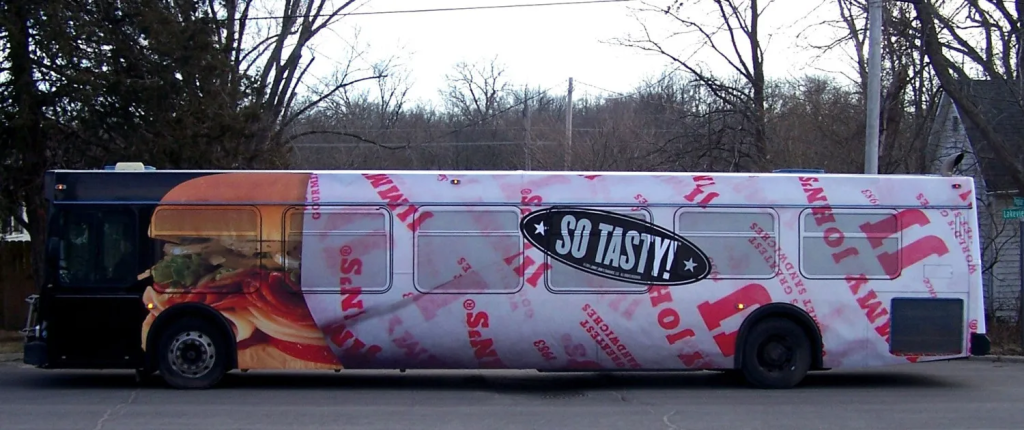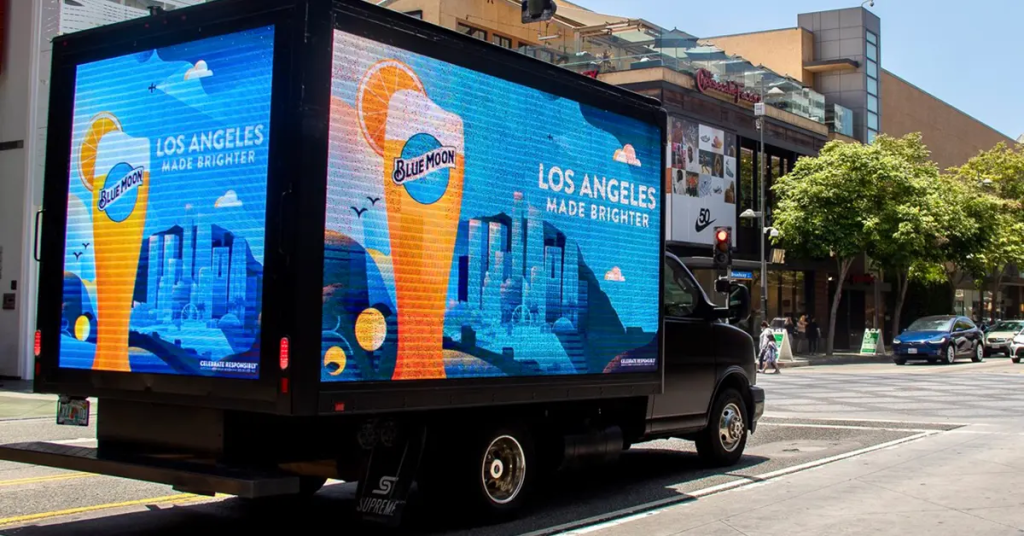
DOOH stands for Digital Out-of-Home advertising, while OOH refers to traditional Out-of-Home advertising. DOOH utilizes digital screens and technology to deliver dynamic and targeted ads to specific audiences. It offers more creativity, visibility, and flexibility compared to traditional OOH advertising. On the other hand, OOH relies on static images like posters and printed vinyl.
DOOH helps with marketing by enabling advertisers to reach their target audiences based on various conditions such as location, dayparting, and user behavior. It allows for interactive ads and can be integrated with mobile locational marketing strategies. The integration of advertising technology (AdTech) in DOOH enables the delivery of contextually relevant ads to specific audiences at the right time, enhancing the effectiveness of marketing campaigns. This makes DOOH a powerful tool for modern marketers, especially as the integration of programmatic buying allows for automated, real-time ad placements based on data.
Understanding OOH: Out-of-Home Advertising
Out-of-Home (OOH) advertising refers to any visual advertising media found outside the home. Think about billboards, bus shelter posters, transit ads, and even those ads you see at the gas pump. This form of advertising is designed to reach consumers while they are on the go, in public places, or commuting.
The Basics of OOH
OOH advertising is a traditional form of marketing that has been around for decades. Typically, these ads are static, meaning they display a single message for a set period. For example, a billboard may feature the same ad for two weeks before it’s swapped out for a new one.
Examples of OOH:
Billboards

These are large outdoor boards displaying ads along highways, in city centers, and other high-traffic areas.
Transit Advertising

Ads found on buses, taxis, trains, and subways that target commuters.
Street Furniture

This includes ads on bus shelters, kiosks, and benches, targeting pedestrians and local traffic.
Why OOH Matters
OOH advertising has a broad reach, and it’s nearly impossible for consumers to ignore it. According to the Outdoor Advertising Association of America (OAAA), OOH reaches 90% of adults in the U.S. over the course of a month. This makes it a powerful tool for brand awareness and top-of-the-funnel marketing efforts.
The Evolution: Digital Out-of-Home (DOOH) Advertising
Digital Out-of-Home (DOOH) takes traditional OOH advertising to the next level by incorporating digital elements. This form of advertising uses digital screens and technology to display dynamic content that can change in real-time.
What Sets DOOH Apart?
Unlike static OOH ads, DOOH allows for the rotation of different adverts over the same period. For example, a digital billboard can display multiple ads in a single day, each tailored to different times of the day or specific audience segments.
Examples of DOOH:
Digital Billboards

These are electronic billboards that can display changing content, allowing for more dynamic and engaging ads.
Interactive Kiosks

Touchscreen displays in public places like malls or airports that engage consumers with interactive content.
Digital Transit Advertising

Screens in buses, trains, and taxis displaying dynamic ads and information.
The Advantages of DOOH
One of the key benefits of DOOH is its ability to leverage data for more targeted advertising. According to a report by Vistar Media, DOOH can use geofencing, tracking, and retargeting to deliver personalized ads based on factors like location, time of day, and even weather conditions. This makes it a highly effective tool for reaching specific audiences with relevant messages. Additionally, the rise of programmatic DOOH (pDOOH) has further revolutionized the sector, allowing for automated, data-driven ad placements that optimize campaign performance and budget utilization.
How OOH and DOOH Help with Marketing
Both OOH and DOOH advertising offer unique benefits that can enhance your marketing strategy. Here’s how:
Broad Reach and Visibility
OOH ads are hard to miss. They’re placed in high-traffic areas and are designed to capture attention. According to Nielsen, OOH ads are the most effective offline medium in driving online activity, with 46% of U.S. adults using their mobile devices to search for more information after seeing an OOH ad.
Targeted and Dynamic Content
DOOH takes targeting to a new level by using data-driven strategies. Brands can deliver ads based on real-time data, ensuring that the right message reaches the right audience at the right time. For instance, a coffee shop can display ads during morning rush hours, while a gym might target evening commuters. Furthermore, with the integration of AdTech, DOOH campaigns can leverage mobile locational data to deliver contextually relevant messages.
Enhanced Engagement
Interactive DOOH ads, such as touchscreen kiosks, can engage consumers in ways that static OOH ads can’t. These interactive elements can capture consumer data, provide valuable insights, and even allow for direct consumer interaction.
Cost-Effective and Flexible
While traditional OOH ads require significant investment for production and placement, DOOH offers more flexibility. Digital ads can be updated easily without the need for physical materials, reducing costs and allowing for quicker changes. Programmatic DOOH further enhances this by enabling automated ad placements, making it easier for brands to adjust their campaigns in real time.
Measuring Effectiveness
One of the challenges of traditional OOH advertising is measuring its effectiveness. However, DOOH provides more robust analytics and reporting capabilities. Brands can track impressions, engagement, and even conversions, making it easier to measure ROI. Advanced tools can analyze audience demographics, behaviors, and the overall impact of the campaign, providing valuable insights for future strategies.
FAQs About OOH and DOOH
To help clarify some common questions, here are five FAQs sourced from the ‘People also Ask’ section of Google search results.
1. What is OOH in marketing?
Answer: Out of Home advertising, often referred to as simply OOH, is the collective term for any adverts found outside the home. This includes billboards, bus shelter posters, transit ads, and other signage seen in public places.
2. What are the benefits of DOOH advertising?
Answer: DOOH ads are great for building brand awareness with easily viewable messages in public locations. They offer dynamic content, targeted advertising, and higher engagement rates compared to traditional static ads.
3. How does DOOH work?
Answer: DOOH uses data-driven strategies to target specific audiences based on factors like location, time of day, and consumer behavior. This includes leveraging data from mobile app usage, purchase history, and even TV viewership patterns to deliver relevant ads.
4. What is an example of DOOH marketing?
Answer: An example of DOOH marketing is the big digital billboards on the streets that display rotating ads. Other examples include digital displays in restaurants, cafes, shopping malls, and gas stations.
5. How do you measure the success of DOOH campaigns?
Answer: The success of DOOH campaigns can be measured through various metrics such as impressions, engagement rates, and conversions. Advanced analytics tools can provide detailed reports on audience demographics, behaviors, and the overall effectiveness of the campaign.
Conclusion
Both OOH and DOOH advertising play significant roles in today’s marketing landscape. While traditional OOH offers broad reach and visibility, DOOH brings the power of digital technology to create dynamic, targeted, and engaging ad experiences. By understanding the unique benefits of each, brands can develop more effective marketing strategies that reach consumers in impactful ways.
Thank you for taking the time to read this article. We hope it provided you with valuable insights into the world of OOH and DOOH advertising. If you want to know more or even implement DOOH or OOH in your company, contact us.




